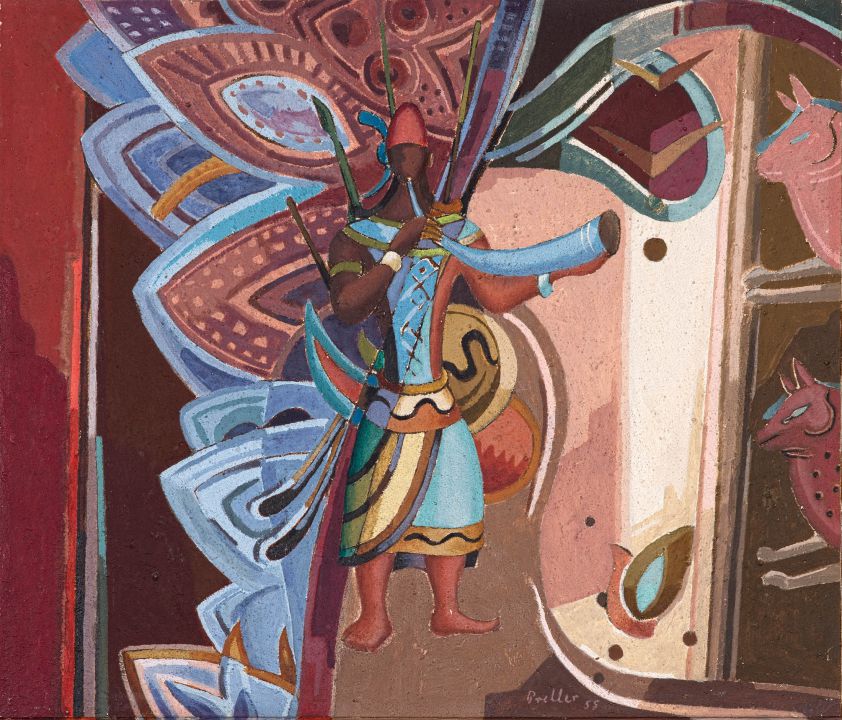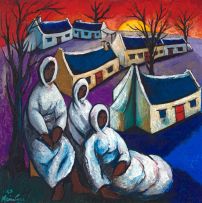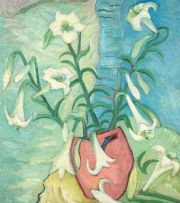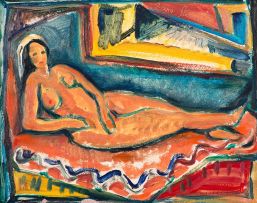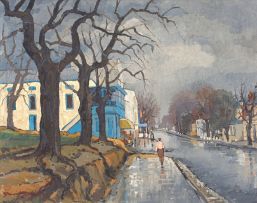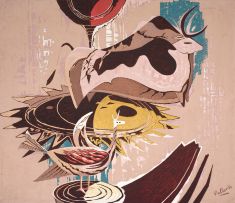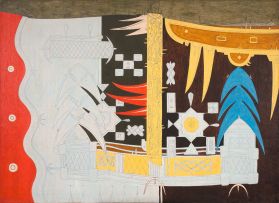Important South African and International Art, Decorative Arts & Jewellery
Live Auction, 5 March 2018
Art: Evening Sale
Incl. Buyer's Premium & VAT
About this Item
signed and dated 55
Notes
The Herald of 1955, shown on Alexis Preller's 16th solo exhibition which opened at the Lidchi Art Gallery in Johannesburg on 13 March 1956, attracted extraordinary interest due to the scale and complexity of his latest compositions, but also due to his seclusion from 1954 to 1955 while he worked on his first major commission All Africa for the Department of Public Works in Johannesburg for the offices of the Receiver of Revenue.
The mural, 9 metres by 3 metres, consisted of three adjoining panels, each 3 metres by 3 metres, explored a complex mythology and recreation of archaic aspects of African culture tempered by the lens of the great Egyptian and Italian mural painting traditions. Preller in 1953 undertook a study tour of Rome, Florence, Arezzo and Ravenna and then continued onwards to Egypt to visit the renowned tombs and temples, particularly to look at the low relief and painted murals of ancient Egypt in preparation for the making of this mural.
In the lower register of the central panel of Preller's ambitious mural, All Africa, is a panel which links directly to the focal figure in The Herald. The artistic sources of the lower frieze are located in the dynastic and courtly traditions of Africa in both Egyptian and Pharaonic conventions, and those from the great historical bronze panels of the Benin Court of Nigeria. [illustrate full lower panel or five figures on left as detail of All Africa in central panel on page 143 - Collected Images] The central enthroned figure, shown in profile, plays an elongated drum that is tucked beneath her arm. The image has strong elusions to the Hieratic images from the tomb of Nefertari in Egypt, her taut silhouette is captured within the confines of the broken contours of a fragment of a Benin bronze plague with its decorative branches and leaves. Once again the Benin flowers drift off into the surrounding composition. She is accompanied on either side by a procession of attendant court musicians with horns, drums and stringed instruments, paying obeisance to her. All these figures are based on Benin prototypes with their wrapped skirts, pointed helmets, spiked collars and almond-shaped eyes.
The central figure in The Herald seems to step straight out of this procession with his Benin bodily proportions, draped robes, conical hat and sweeping blue horn. On the left he is framed by huge arced petals, direct quotations of the Benin flowers and leaves painted in exquisite blues, maroons and ochres set against a backdrop of dark resonant tones. On the right the horn blown by the musician seems to issue a sweep of sound made visible in radiant light pink, salmon and rose-like tones. This composition seems to glow with an uncanny archaic quality amplified by the inclusion of sand in the paint evoking the surface of ancient mural walls. The cropped images of two mythical creatures on the far right seem to imply that the work is a fragment of a much larger composition, possibly an artefact, an image to be extrapolated, a conscious conceit in Preller's myth making.
Karel Nel
Exhibited
Lidchi Gallery, Johannesburg, 13 to 24 March 1956, catalogue number 21.
Literature
Esmé Berman and Karel Nel. (2009) Alexis Preller: Africa, the Sun and Shadows, Johannesburg: Shelf Publishing. Page 367.
